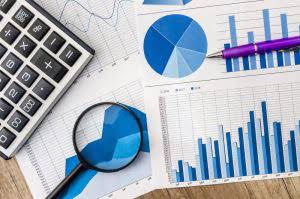
For example, accounts receivable and payable are eliminated in favor of actual cash receipts and payments. This conversion requires a detailed review of balance sheets and income statements to reflect cash flow accurately. Businesses should also assess the impact on financial ratios, such as the current ratio, which may change significantly due to the altered timing of revenue and expense recognition. Accrual accounting records income or expenses as soon as they are incurred, regardless of when payment is made or received, and this can provide a more accurate picture of the company’s financial health.
- Cash accounting may be permissible for smaller entities but is typically not accepted for audited financial statements or filings under GAAP or IFRS.
- Listed below are some of the key differences between cash and accrual accounting.
- This can sometimes result in a higher tax burden, as businesses may have to pay taxes on income they have not yet received.
- This method allows them to maintain a clear and immediate understanding of their cash flow, which is crucial for managing day-to-day operations.
- In such cases, the simplicity of cash basis accounting can be outweighed by the need for more detailed financial information, making accrual accounting a more suitable choice.
- However, the auditor will look for different things when auditing a business using the cash basis method than when a business uses accrual accounting.
Accrual Accounting vs. Cash Basis Accounting: Example

For cash basis accounting measures income based on some small business owners and independent contractors who carry no inventory, it is a suitable accounting practice. Many small businesses avoid employing accountants and using complex accounting systems when using this method because of its ease of use. He bills the client $25,000, but is not paid until June, because the client turns out not to be so rich. He cashes the client’s check in June, and records $25,000 of revenue in his accounting records at that time. He does not record the $25,000 in February, when he completed the work, because he operates under the cash basis of accounting.
Key Financial Statements in Cash Basis of Accounting
It is also easier to make mistakes without the double-entry checks and balances that other accounting methods use. Unlike other methods, when you use cash accounting you’re only taxed on income that you’ve received within the tax year. An example of cash basis accounting would be a small retail store that purchases products from Certified Public Accountant a supplier. The store would recognize the expense only once the product payment has been made rather than when they receive the goods. If the company receives an electric bill for $1,700, under the cash method, the amount is not recorded until the company actually pays the bill.
- Most businesses are required to follow GAAP, especially if they are publicly traded or seeking investment.
- Tax implications play a critical role in the decision to switch accounting methods.
- Businesses must anticipate periods of low cash inflow and prepare to meet financial obligations.
- The process requires adjustments to ensure financial statements reflect cash transactions accurately and that prior accruals are properly addressed.
- While it is true that this method simplifies the recording of transactions, it can become cumbersome for businesses that deal with a high volume of transactions or have complex financial activities.
- This makes it essential for business owners to consult with tax professionals to determine the most advantageous accounting method for their specific circumstances.
- If you run a public company, you must use the generally accepted accounting principles (GAAP) and cannot use a cash method.
Does cash basis violate GAAP?

The workspace is connected and allows users to assign and track tasks for each close task category for input, review, and approval with the stakeholders. It allows users to extract and ingest data automatically and use formulas on the data to process and transform it. Cash basis accounting is an easy and straight-forward method and is therefore used by self-employed individuals and small businesses who are cash rich. For example, under the cash basis method, retailers would look extremely profitable in Q4 as consumers buy for the holiday season. However, they would look unprofitable in the next year’s Q1 as consumer spending declines following the holiday rush. To be even more clear for any reader of the income statement who did not see the revised header, you should relabel the “Net income” line with “Cash basis net income”.

BILL Spend & Expense can help you take control of your budget and start spending smarter with customizable spending controls and policies. Schedule a personalized BILL Spend & Expense demo to learn more about what it can do for your company’s financial health. Cash basis accounting is an accounting system in which you record revenue or expenses when cash is received or paid. This means that you record income when a customer hands you cash, a check, or digital payment. In commerce, “cash” refers to any money you receive, even if it’s not in the form of physical currency. As per the cash basis accounting method, the cash flow statement shows the sources of cash received or paid for operating, financing, and investing activities.
Financial Reporting
- Expense deductions under cash basis accounting are recorded when payments are made, aligning expense reporting with cash outflows.
- That’s the $5,000 of revenue from the completed project, minus the $1,000 due to the freelance designer, minus the $75 you paid for supplies.
- This requirement stems from the method’s ability to provide a more consistent and transparent financial picture.
- Cash basis accounting is usually unsuitable for businesses looking to secure financing or manage investments, as lenders and investors prefer to see accrual-based records.
- This conversion requires a detailed review of balance sheets and income statements to reflect cash flow accurately.
Calculating cash basis in accounting is quite straightforward—just track the actual amounts of money your business received and paid out over a given period. If a business makes $10,000 in sales during the month but only receives $5,000 in payments, then its income would be reported as $5,000 for that month instead of the full $10,000. Cash basis accounting is relatively easy to use and maintain, which makes it an attractive option for small business owners and individuals without extensive accounting knowledge. They can track their financial transactions based on cash inflows and outflows without the need to track accounts receivable or payable. While accrual accounting offers a more nuanced understanding of financial performance, it also requires more sophisticated tracking and reporting systems. Businesses must maintain detailed records of receivables and payables, which can be resource-intensive.
This simplicity can be advantageous for businesses with limited accounting resources, as it reduces the need for complex tracking systems. A start-up company will frequently begin keeping its books under the cash basis, and then switch to the accrual basis when it has grown to a sufficient size. Accounting software can be configured to work under either the cash basis or the accrual basis of accounting, usually by setting a flag in a setup table.
Cash basis accounting is a simple, straightforward process
How businesses report their financial performance to stakeholders is an important factor in accounting and overall financial management. Businesses can either use the cash basis accounting method or the accrual method. The decision is based on a lot of factors, however, it majorly depends on the size of the business. Instead, it is recorded once the earning process is complete and the business has fulfilled its obligations to the customer. Accounting Security Cash basis accounting influences the timing of income and expense recognition, which affects tax liability.

Cash basis accounting does not inherently solve cash flow issues but facilitates clearer tracking and management. For example, a seasonal business like a holiday decoration retailer may find cash basis accounting beneficial, as it aligns revenue recognition with cash inflows during peak sales periods. The timing of cash receipts can also be strategically managed to influence financial outcomes, but this requires careful planning and documentation to ensure compliance with tax laws. Cash accounting may not give an accurate picture of your company’s overall financial position. It’s very black-or-white and doesn’t take nuances into account like the time it takes for transactions to go through, inventory on hand, and expenses incurred. This discrepancy can paint an inaccurate picture of how well the company is doing and can make comparative analysis difficult especially if you owe multiple debts.

